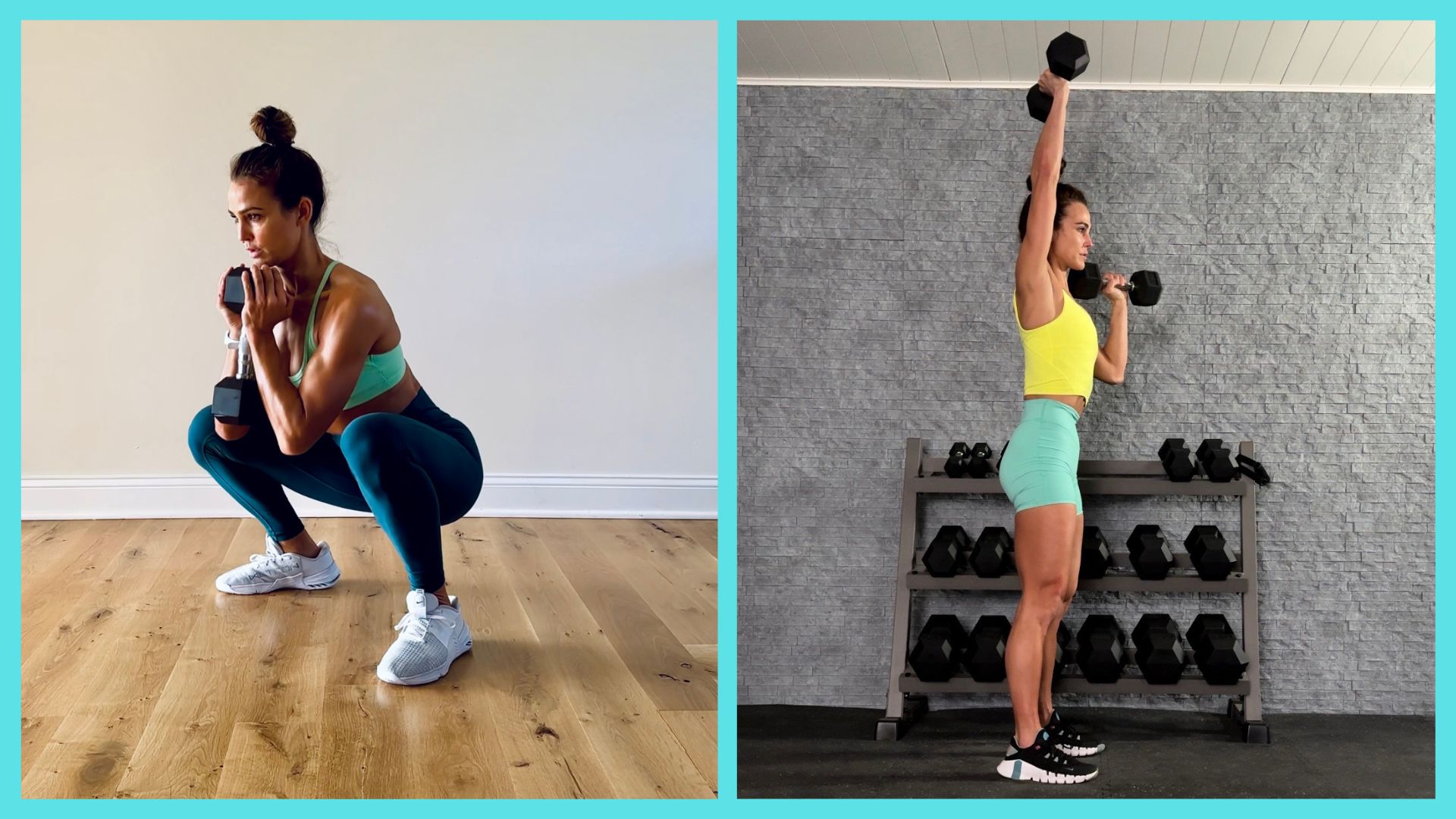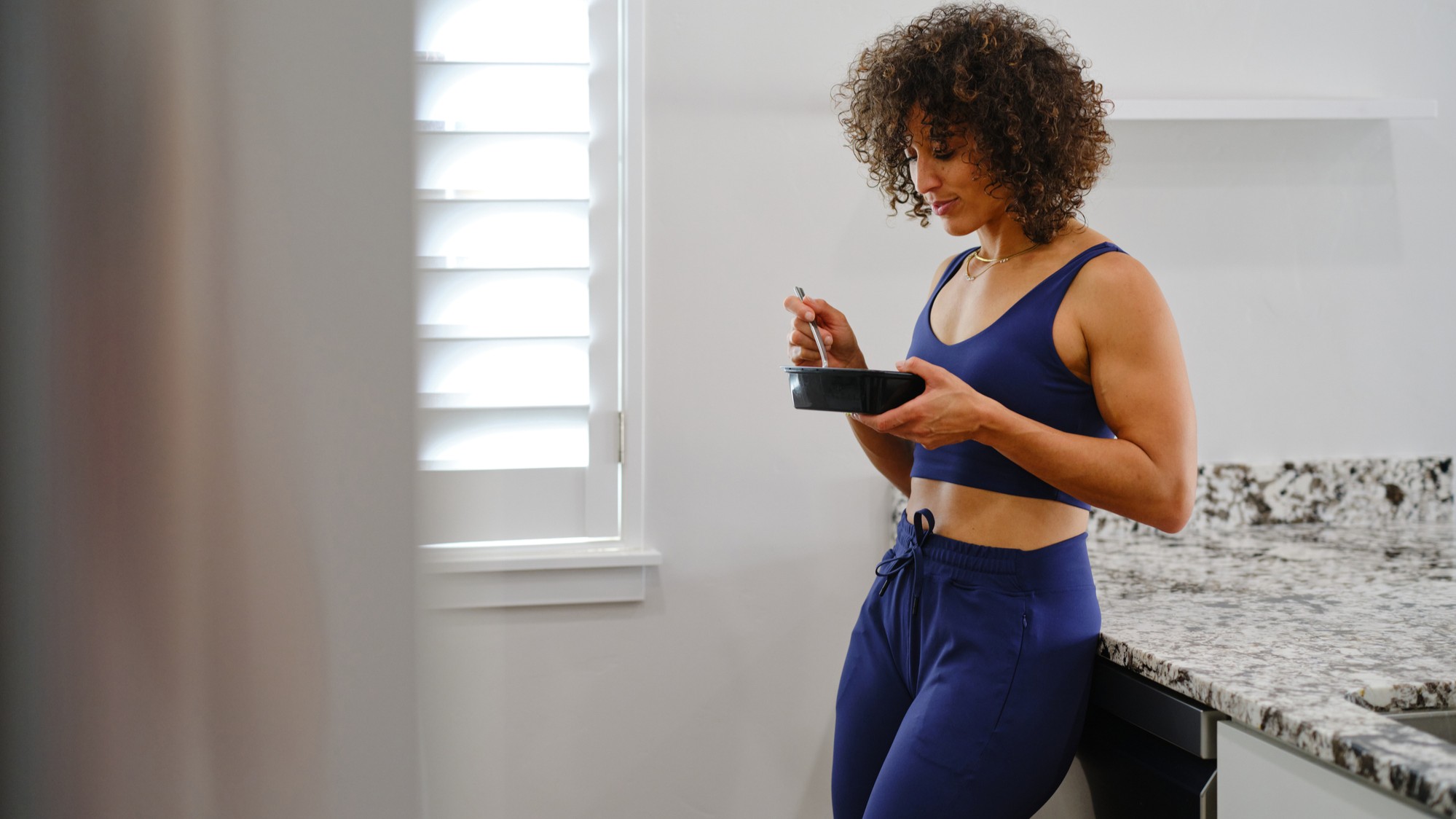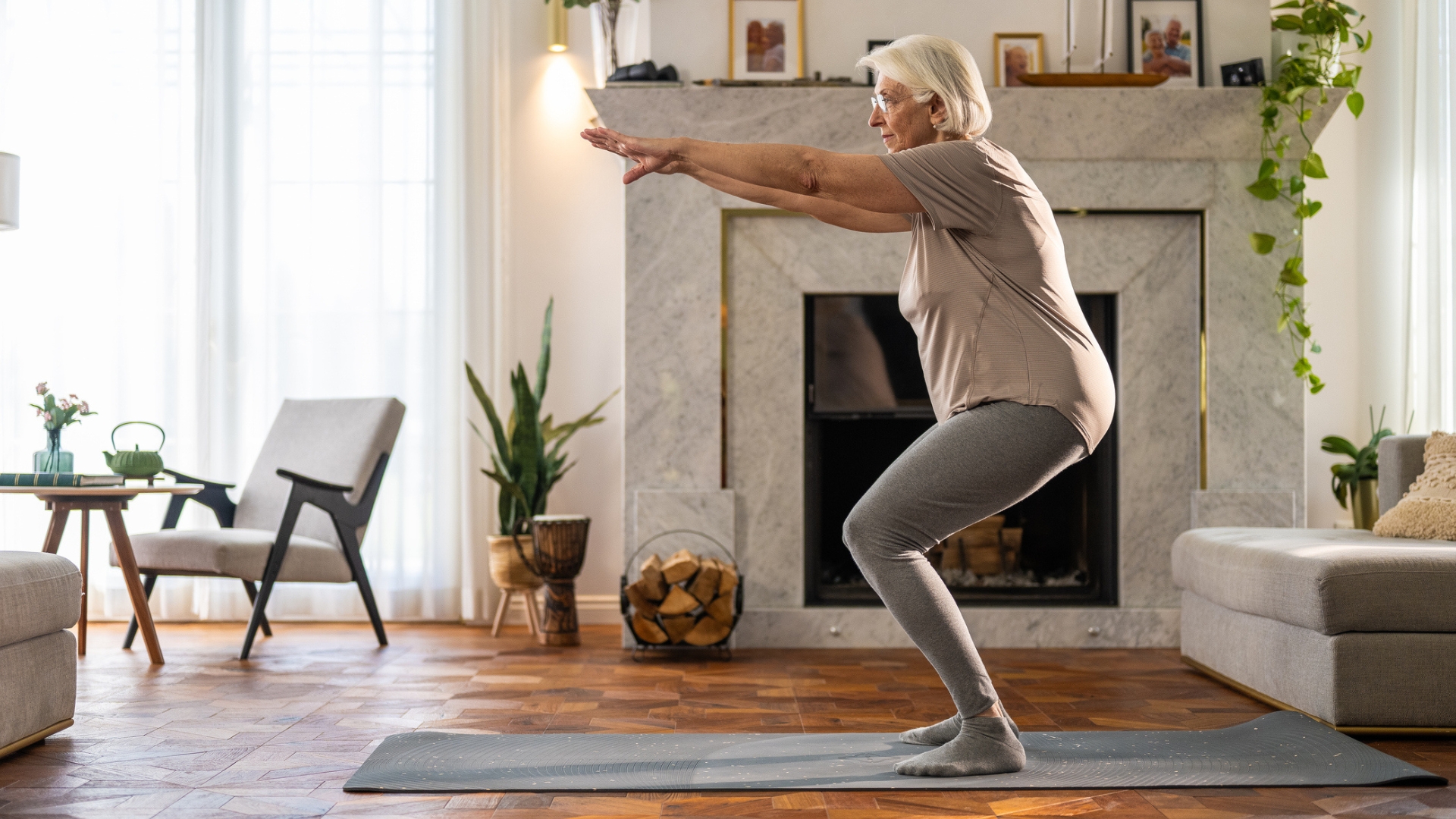An expert trainer shares five dumbbell exercises she thinks most people should be doing to build full-body strength
Strengthen your entire body, build muscle all over and boost your stability with these five dumbbell exercises


Your time is precious, and when you spend it exercising you want to know the moves you choose are effective.
To help, ACE-certified personal trainer and UESCA run coach Melissa Kendter has shared the five exercises she thinks almost everybody should be doing and combined them into a dumbbell workout for you to try.
"My brain immediately says they have to do a squat, a hinge, a push, a pull—all the major movement patterns," Kendter says.
"As long as you’re effectively hitting every major movement pattern and the last few reps are a challenge, you’re going to have an effective workout."

Melissa Kendter is a functional strength coach, UESCA running coach and ACE (American Council On Exercise) certified personal trainer. She is also a multi-time marathon finisher, Boston marathon qualifier and triathlete. She's the founder of personal training business TrainMK and owns a private studio for training clients one-to-one.
How to do Melissa Kendter’s five-move dumbbell workout
- Goblet squat 3x8-12
- Kickstand Romanian deadlift 3x8-12 on each side
- Single-arm bent-over row 3x8-12 on each side
- Neutral grip alternating shoulder press 3x8-12 on each side
- Side plank reach through 3x8-12 on each side
Perform each of the exercises above for three sets of eight to 12 repetitions, resting for 60-90 seconds between each one.
For this workout, you will be using straight sets. That means you’ll do all sets of one exercise before moving on to the next one.
1. Goblet squat
Sets: 3 Reps: 8-12 Rest: 60-90 seconds
Get the Fit&Well Newsletter
Start your week with achievable workout ideas, health tips and wellbeing advice in your inbox.
- Stand upright with your feet roughly hip-width apart. Hold a dumbbell tight to your chest, gripping one end with both hands.
- Push your hips back to initiate the movement, then bend your knees to lower your hips towards the ground as far as you comfortably can while keeping your back flat and your chest up.
- Drive through the heels to return to the starting position.
Why choose this move?
The squat is the king of exercises for building stronger legs, and the goblet squat is a great variation to plump for.
"This exercise is beneficial for everybody," Kendter says. "For beginners, a goblet squat is great because it helps them learn good form and stay upright as they drop into a squat position instead of tumbling forward.
"If you’re advanced, you can lift a heavier weight or perform a more difficult variation like a rear foot-elevated goblet split squat."
2. Kickstand Romanian deadlift
Sets: 3 Reps: 8-12 Rest: 60-90 seconds
- Stand upright with a dumbbell in each hand, then take a slight step back with your left leg and plant your toes on the floor. Your legs should be almost straight, with slightly soft knees.
- Keeping your back flat, hinge at the hips to lower the dumbbells as far as you can towards the toes on your right foot.
- Squeeze your glutes to reverse this motion and stand back up straight.
Why choose this move?
"This exercise is great for developing single-leg and glute strength and stability," Kendter explains.
"Working unilaterally [on one side of your body at a time] helps strengthen the muscles around the hips, knees and ankles, so you're strengthening the entirety of your leg.
"It improves your coordination and stability too, which will support other activities like running. Running is a single-leg plyometric sport, so if you strengthen each leg equally you’ll be more powerful and balanced."
3. Single-arm bent-over row
Sets: 3 Reps: 8-12 Rest: 60-90 seconds
- Assume a staggered stance with your right foot forward and hold a dumbbell in your right hand.
- Keeping your back flat, hinge at the hips to bend forward until your torso is almost parallel with the floor. Let your right arm hang towards the floor.
- Row the dumbbell up to the bottom of your rib cage on your right side, keeping your arm and elbow close to your body, then control it back to the starting position.
Why choose this move?
To strengthen your upper body, Kendter recommends multi-muscle compound exercises like the single-arm row, which focuses on your back and biceps.
"It hits the lats [the large, flat muscles across your upper back], which are the largest muscles in the upper body," she says.
"Keeping this area strong is important for running as it helps you maintain an upright posture and keep your arm swing strong.
If you have access to a pull-up bar or a cable machine, Kendter says she also likes her weekly training to include a "horizontal pull and a vertical pull to equal it out".
This refers to the direction you are moving a load. Vertical pulling exercises include the likes of pull-ups and lat pull-downs, while single-arm bent-over rows and bent-over rows are examples of horizontal pulling exercises.
4. Neutral grip alternating shoulder press
Sets: 3 Reps: 8-12 Rest: 60-90 seconds
- Stand or kneel upright with a dumbbell in each hand, held at your shoulders with your palms facing you. The handles should stay parallel throughout this exercise.
- Extend your right arm straight upwards so your bicep ends up by your right ear, then lower it back down to the starting position.
- Once the right dumbbell is back at shoulder height, perform the move with the dumbbell in your left arm. Continue to alternate your arms for the prescribed repetitions.
Why choose this move?
"From my experience, a lot of people have shoulder pain when they do this move with both hands, so I’ll start by getting them to do single-arm shoulder presses," says Kendter.
"I’ve seen struggle with overuse injuries as they age, so sometimes certain exercises and the positions they put you in can aggravate something. But I’ve noticed doing it one side at a time and keeping more of a neutral grip eliminates that pain, which is very interesting.
"It also helps beginners focus on one side at a time, rather than trying to use momentum from their legs to jerk the dumbbells up overhead."
5. Side plank reach-through
Sets: 3 Reps: 8-12 Rest: 60-90 seconds
- Lie on your side with your feet stacked on top of one another.
- Prop yourself up on your forearm so it runs perpendicular to your body and your elbow is directly beneath your shoulder. You can support your body from your bottom foot, or lower your knees to the floor for an easier variation.
- Reach your higher arm towards the ceiling, then bring it down towards the floor in front of you and under your body as far as you can.
- Reach back up towards the ceiling to complete the repetitions, then repeat.
Why choose this move?
"I always include some core work in my workouts, and there’s always a side plank in some form," says Kendter.
"The side plank works the oblique muscles, as well as core muscles that support the spine, which is beneficial for runners, and pretty much anybody.
"I like moving during my core strengthening exercises too, so I’m a big fan of a side plank reach-through. Even if I’m doing a traditional plank, I’ll tap forward, move to the side, or do something, just so I have an element of resisted movement."
Need some help picking your next set of weights? Our guide to the best adjustable dumbbells can help

Harry Bullmore is a Fitness Writer for Fit&Well and its sister site Coach, covering accessible home workouts, strength training session, and yoga routines. He joined the team from Hearst, where he reviewed products for Men's Health, Women's Health, and Runner's World. He is passionate about the physical and mental benefits of exercise, and splits his time between weightlifting, CrossFit, and gymnastics, which he does to build strength, boost his wellbeing, and have fun.
Harry is a NCTJ-qualified journalist, and has written for Vice, Learning Disability Today, and The Argus, where he was a crime, politics, and sports reporter for several UK regional and national newspapers.
-
 Put down the protein shake—this high-protein chicken and rice recipe is a better way to refuel after a workout
Put down the protein shake—this high-protein chicken and rice recipe is a better way to refuel after a workoutAnd it only takes 10 minutes to make
By Lou Mudge
-
 The three Pilates exercises every beginner should start with, according to an expert instructor
The three Pilates exercises every beginner should start with, according to an expert instructorA sequence that will take you no more than 10 minutes
By Alice Porter